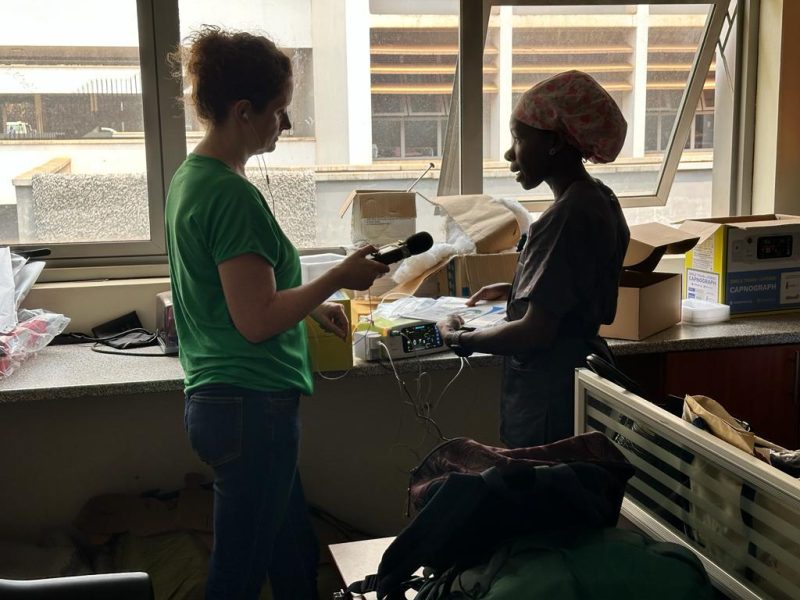
Lifebox features on the BBC
'One Crucial Piece of Equipment': Improving anesthesia monitoring with The Smile Train-Lifebox Capnograph.

'One Crucial Piece of Equipment': Improving anesthesia monitoring with The Smile Train-Lifebox Capnograph.
Lifebox is standing a little taller this week – approximately 46,000 times taller! That’s the size of the American Society of Anesthesiologists membership, and you might have seen from our website that this anaesthetic colossus recently launched a campaign to support us. ASA held their annual meeting in Chicago last week, and invited Lifebox along […]
If you’ve seen our excitement on Facebook or watched us struggle to contain our characters on Twitter, you’ll know that we’ve got some big news to share. The British Medical Journal, one of the most prestigious peer-reviewed medical journals in the U.K., has – well – we’ll let them tell you: “Christmas is coming and this week […]
We recently caught up with safer surgery advocate Dr Sohel Ahmed, former President of the Sudanese Doctors Union of Ireland (SDUI) to discuss the organisation’s work in supporting anaesthesia providers in the country, and this is what we learned. What motivated you to collaborate with Lifebox? My colleagues and I formed SDUI with an important […]
They say that the recession is affecting charitable giving. We say, have you met the readers of the British Medical Journal. Over the last two months, a stationer’s rainbow of envelopes has greeted our mornings and a rush of online donations have cheered our afternoons (sometimes we actually cheered!) Generous readers have raised more than […]
…is blue and red to map the anatomically-correct arteries of the heart, sculpted from madeira cake by a cardiac anaesthetist. …is yellow and artfully piped above a simple Victoria Sandwich loaf in the shape of an oxylog for transport. …sits on a strawberry jam and butter filling, below the sugar paste head, feet and guts […]
“Suddenly, to no one’s surprise, a large black object, namely Remy’s suitcase, flew off the roof, down the windshield and landed in front of us.” Between the needs assessment and the measurement; alongside the logistics of funding and coordinating equipment distribution and training for a hundred people traveling in from a hundred different directions – behind […]
Not every comic is meant to be funny. While the Scottish city of Dundee’s classic troublemaker Dennis the Menace always lunged for the elbow, one of its newer residents has gone for the incision. Handiwork: surgery in sequential art, by Emmanouil Kapazoglou, adapts the comic strip format to tell a serious story that is both […]
I have to say that the conference was an experience beyond all my expectations. I was impressed by the high quality of speakers and the perfect organization. The range of lectures, panels and workshops kept me focused all day long. I even had the pleasure to be on a panel alongside with Dr Nick Boyd, Mr Andy […]
Earlier this year our Honourary Clinical Advisor, Dr Ed Fitzgerald travelled to Rwanda to deliver essential surgical training and follow-up on Checklist and pulse oximeter use at Kibagabaga hospital. In this blog first published on our co-founder the WFSA’s website he reflects on his trip. One of the remarkable aspects of returning to Rwanda regularly over the […]